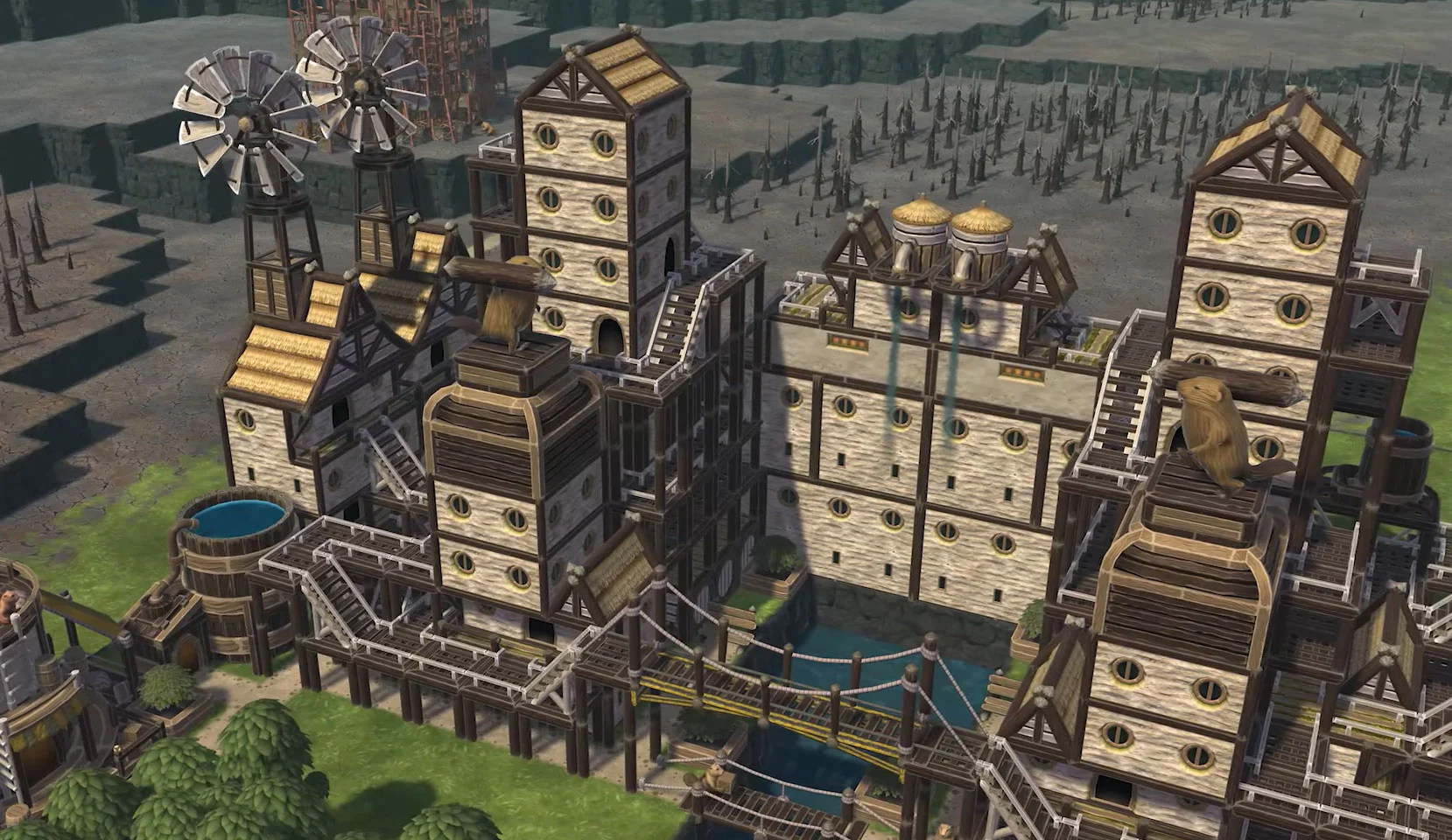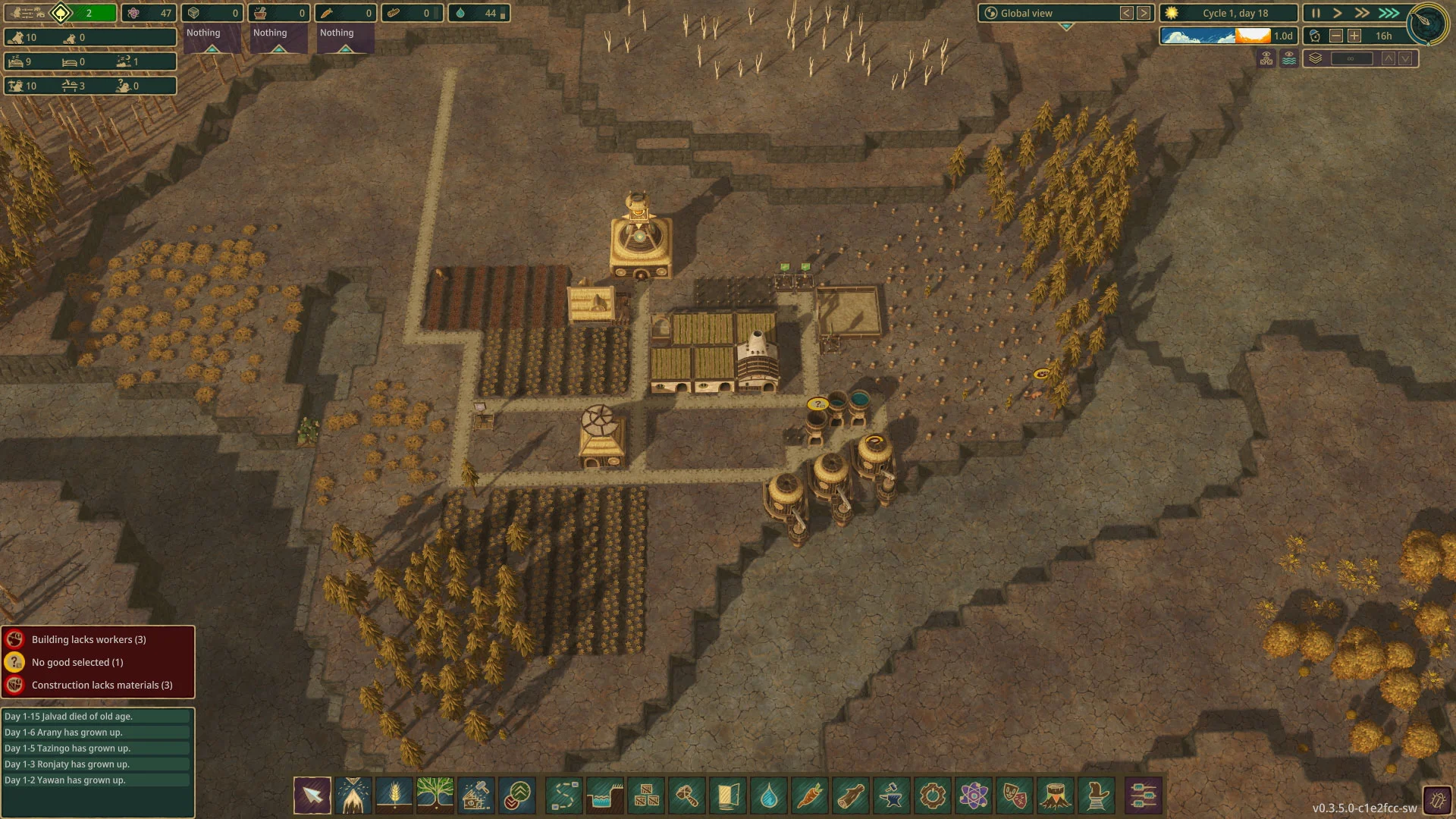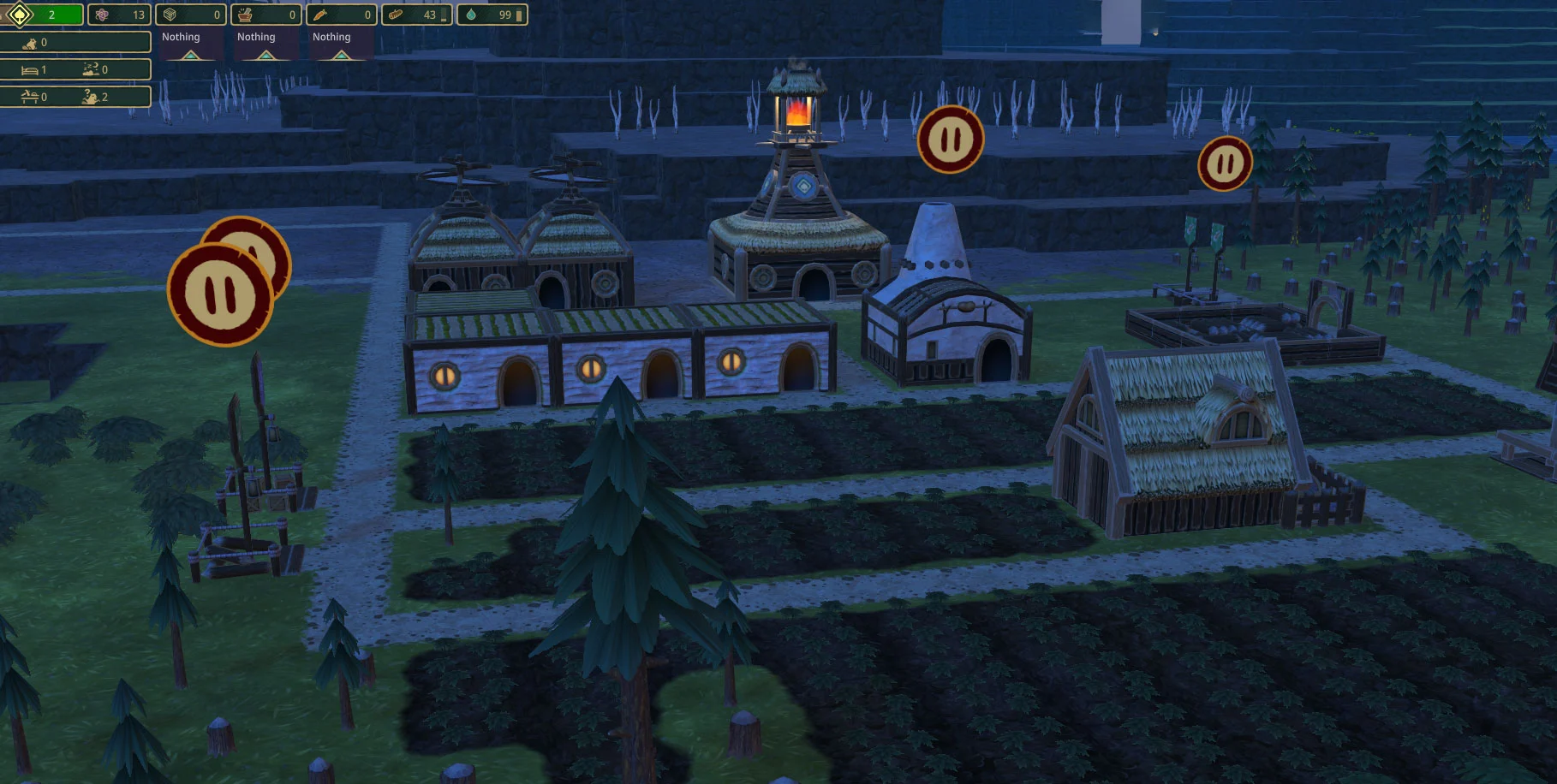Timberborn, developed by Mechanistry, is a city-building and settlement-management game where players take control of a group of beavers and stock up to survive the summer drought.
What would happen if humanity destroyed the environment and the only remaining creatures on earth were technologically-advanced beavers? Timberborn, released into early access on September 15, 2021, looks to answer that question.
In the world of city-builders, Timberborn has a few unique things going for it. For one, vertical construction in the game enables players to build complex multi-floor bases customized to their specific blueprints. This aspect of construction makes the game feel unique, especially because most settlement-builders encourage players to build out, where Timberborn is designed to build up.

The second unique and innovative mechanic in Timberborn is the ability of the player to affect and adjust the flow of water. Water is your most important resource in the game. As your population grows, finding enough to satiate the unquenchable thirsts of your beavers isn’t easy. To help you, the game lets you build water pumps, dams, and entire irrigation systems once you really get deep into the game. This aspect adds a whole layer of complexity that makes it feel different from its counterparts.
Flipping a Popular Trope
While the winter is the player’s main enemy in most city-building games, Beaverton turns this on its head and makes the summer drought the real danger. While this could feel very different, it’s much of the same if you’ve played other city builders. Get ready and stock up to survive the harsh season, make it through till the end, or succumb to the elements. That being said–it is a nice change of pace and brings with it its own unique set of problems.

One of the worst parts of some settlement sims is the overwhelming amount of information the player must consume before getting their first production chain started. In Timberborn, the buildings make sense. The game is fairly intuitive, and the in-game tutorial will ensure that your first settlement won’t immediately fail.
I appreciated this aspect, as some other games in the genre require memorizing the names of unique buildings; in Timberborn, there’s a Water Pump that pumps water and a Farm that grows carrots. It all feels very intuitive until–that is, you get to electricity, which at that point–you should understand the game well enough to make it through the more complex sections.
A Dam Nice View and Soundtrack
The controls in Timberborn feel fluid, and the game runs well–even on lower-end hardware. I initially played the game on a laptop with an NVIDIA GeForce GTX 1650, and it ran fine until my base reached omega tiers of complexity.
The music really fits the aesthetic of the game, and while there’s usually not much to be said about graphics in city-building games, the ones in Timberborn are bright, cute, and enjoyable. In terms of performance, I didn’t suffer many crashes, even in the earlier days of the early access–so that’s a plus.
Even at 3x speed (my preferable pace), the game doesn’t feel jittery or laggy, which is something that can’t be said for other games in the genre.

Active Developers
One of the great things about Timberborn is that the developers seem active. I originally picked the game up when it was first released into early access, and I recently did a playthrough to write this review. While a lot felt familiar, there were new things, including assigning specific goods to storage, a new race of beavers, and robots that you can create with the right production buildings.
In a graveyard of what seems like half-finished releases and canceled early-access ventures, Timberborn has a passionate crew driving its development, which should be reassuring for anyone that’s hesitant to try it while it’s in early access.
There Could be More
Just as it is with most settlement games, understanding all the different production lines available to you at first might feel daunting. However, after a few playthroughs of Timberborn, it becomes pretty straightforward. Beyond redesigning portions of your city to accommodate the introduction of power to your society or redirecting water by building dams, there could be more.
For one, it doesn’t feel like your beavers ever advance through the ages–you’re stuck in time in a fictional reality of an apocalyptic future. There are no eras or history, which makes the current building pool feel shallow. While there is tech you gain by researching, and buildings you can eventually upgrade, it doesn’t have the gravitas of other games where you can enter different ages or eras.
The game isn’t done–in the sense that the developers are still collecting feedback from the community to alter and adjust the game. The product itself doesn’t feel entirely too unfinished, but some features are lacking. For one–as a non-procedurally generated city builder, players are locked into a limited pool of choices for their map. Only until recently are more diverse biomes and locations being added, which can make repeat playthroughs less fun unless you have a specific goal in mind.
Other than drought, there really are no threats that you’ll face other than–longer drought. This can make the game feel somewhat one-dimensional and reduce the stakes.
Sometimes, it feels like you’re just trying to keep up with your multiplying population by gathering more things rather than feeling accomplished or advancing your civilization. And while it’s more than possible to create a sustainable society by reforesting locations and terraforming areas of the map, the end goal feels elusive, which can detract from your overall experience.
Final Thoughts
Beaverton is a fun, cute, and unique take on the city-building genre. The Early Access version of the game has a lot of content that can keep you occupied for hundreds of hours–depending on how deep you want to get into the game.
The controls and buildings feel intuitive, and the game runs well on a decent range of hardware. While only time will tell on what direction the developers, or more aptly in this case–the community, takes the game is to be determined, but in its current state, the title is fun and well worth the price tag.
Timberborn Early Access Review
Good
Timberborn is a fun, cute, intuitive city-builder with a streamlined UI and straightforward production chains. While there’s certainly enough to keep players busy for hours, the game still has room to improve if it hopes to set itself apart from other games in the genre.
You can purchase Timberborn on Steam.
See our Review Policy Here.
[Reviewed on PC]





